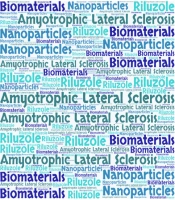Dear Editor,
Amyotrophic lateral sclerosis (ALS), also known as Lou Gehrig’s disease, is a devastating neurodegenerative disorder primarily affecting motor neurons in the central nervous system (CNS), where extra-motor manifestations are progressively identified (1). The main pathological feature of ALS is the death of motor neurons, which is more prevalent in ALS cases associated with frontotemporal dementia (FTD) (2). In adults, weakness and progressive focal muscle loss are ALS’s most prevalent clinical manifestations. Distal muscles are more susceptible to muscle weakness than proximal muscles. Clinical symptoms typically appear between the ages of 40 and 70, with a prevalence in Europe of 10 - 12 per 100,000 (3). Approximately 10% of ALS cases are familial, but most cases are sporadic. The mean age of the onset of symptoms for sporadic ALS is 58 - 62 years, and 40 - 62 years for familial ALS. Moreover, men are more likely to develop sporadic limb-onset ALS than women (4).
Recent advances in understanding ALS have revealed the disease’s complexity and multifactorial motivation. Clinically and pathologically, sporadic and familial ALS are identical; thus, it is believed that they share common pathogenetic features, and there is a convergence of events leading to ALS (1). Several potential pathogenic factors, including mitochondrial dysfunction, endoplasmic reticulum stress, hyperexcitability, impaired protein homeostasis, oxidative stress, and neuroinflammation, have been identified in ALS (5). Approximately 30% - 50% of familial ALS and 7% of sporadic ALS are caused by a hexanucleotide repeat expansion in the C9orf72 gene. There are over 30 genes associated with familial ALS (6). However, the physiopathological process can be categorized into three main categories: RNA metabolism, protein homeostasis, and trafficking and cytoskeleton dynamics (7). Deficiencies in these pathways can lead to the activation of nonneuronal cells such as astrocytes, microglia, and oligodendroglia, thereby reducing the viability of motor neurons (8).
The FDA has approved only 2 drugs for treating ALS: Riluzole and edaravone. Edaravone is an effective free radical scavenger, whereas riluzole inhibits glutamate release (9). Although there is sufficient consensus regarding the modest efficacy of riluzole, questions remain regarding edaravone’s efficacy in slowing disease progression. To this end, additional clinical trials with stricter inclusion criteria are required (10). Nanobiological materials loaded with riluzole offer improved therapeutic approaches and drug delivery systems for neurological diseases, particularly ALS. For instance, in a study conducted by Bondì et al. (11), loaded solid lipid nanoparticles were used to transport riluzole, which resulted in a more effective transfer to the brain and fewer side effects due to the drug’s low concentration in non-targeted organs. A study by Bonferoni et al. (12) examined the use of nanoemulsions to transport the drug to the brain via intranasal administration instead of oral absorption.
In the field of nanomedicine, nanoemulsions (nanodroplets with a high surface area) are becoming increasingly important. Consequently, nasal nanoemulsions appear to be effective, non-invasive, and safe drug delivery systems for treating neurological diseases by brain targeting. Several studies used chitosan nanoparticles to transport riluzole; an intranasal nanoparticle delivery system successfully delivered the riluzole drug (13). Wiley et al. used encapsulated minocycline in lipopolysaccharide (LPS) modified liposomes for targeting TLR4 on microglia in SOD1 mice, intending to introduce capsule minocycline as a method to reduce neuroinflammation (14). Gouel et al. aimed to investigate the biotherapeutic potential of heat-treated human platelet lysate (HHPL) in ALS and the role of platelet neurotrophic growth factors (pNTFs) in this protection in their study (15). The findings show for the first time that selected platelet lysate biomaterials have a high potential for neuroprotection in ALS biotherapy and that platelet lysate biomaterials are neuroprotective in ALS (15).
In conclusion, novel disease-modifying therapeutics (stem cell therapies, gene therapies, and newly-developed biomaterials) are urgently required to slow the progression of the disease and increase the lifespan of ALS patients. Using biomaterials for the delivery of currently approved drugs can improve therapeutic outcomes. Human studies are necessary to validate biomaterials as ALS treatments. Such studies can advance our knowledge of the disease and provide hope that it can one day be eradicated.
